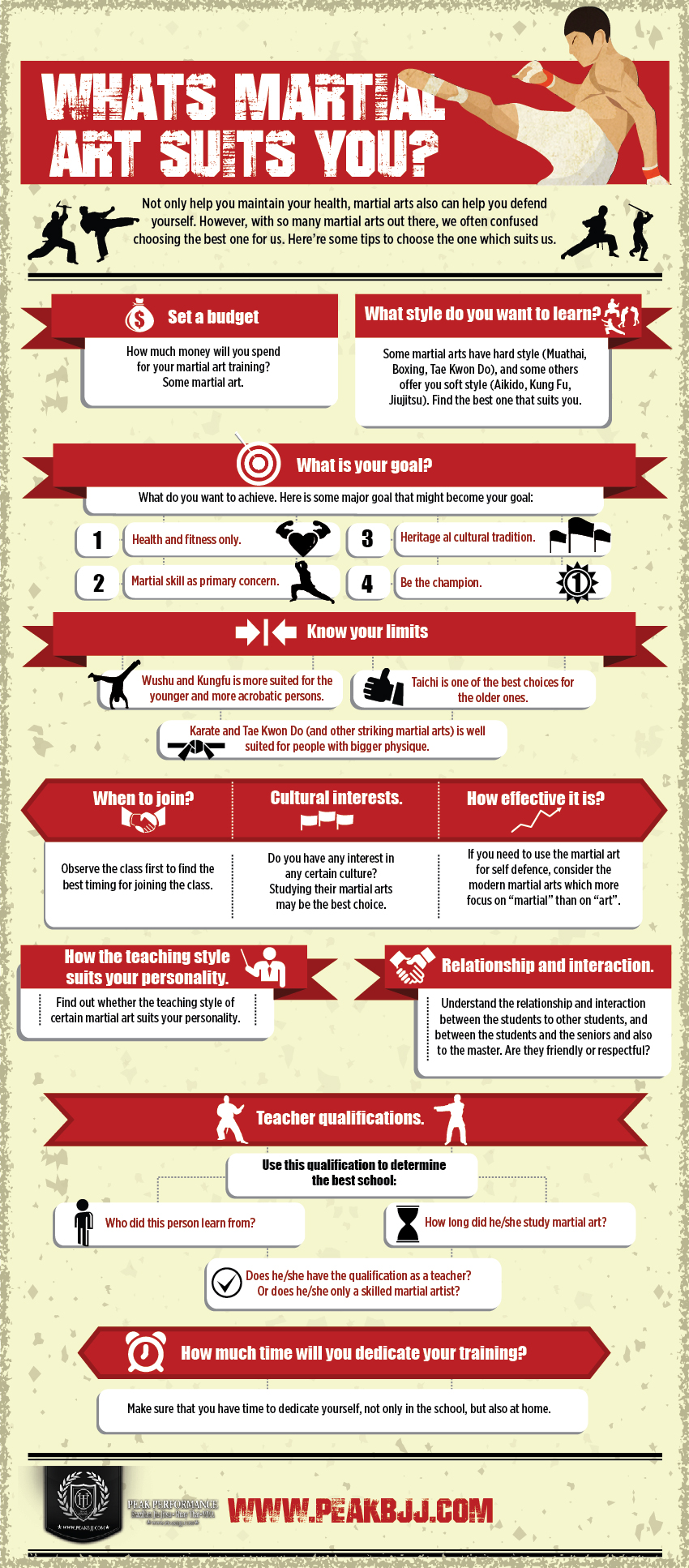Revealing The Selection Of Martial Arts Disciplines: An Overview From Martial Arts To Taekwondo
Revealing The Selection Of Martial Arts Disciplines: An Overview From Martial Arts To Taekwondo
Blog Article
Published By-Stender Husum
Are you tired of sensation bewildered by the substantial world of martial arts? With a lot of styles to pick from, it can be very easy to obtain lost in a sea of strikes, kicks, and strange names. But worry not!
This discussion will debunk the different martial arts styles, taking you on a trip from the effective strikes of Martial arts to the vibrant kicks of Taekwondo. Prepare yourself to discover the origins, strategies, and philosophies behind these ancient art types.
So, tighten your belt and prepare to embark on an enlightening expedition right into the captivating globe of fighting styles.
Beginnings of Martial Arts Styles
The origins of fighting styles designs can be mapped back to old people and their need for self-defense and fight techniques. Throughout history, different cultures established their very own special methods of battling, each with its very own collection of methods and approaches.
In China, for example, martial arts designs such as Martial art and Tai Chi were developed as a way of self-defense and enhancing physical and mental well-being.
In Japan, the samurai warriors produced designs like Karate and Judo, concentrating on technique, accuracy, and mastery of the body.
Likewise, in Korea, Taekwondo became a fighting style highlighting high kicks, quick activities, and psychological fortitude.
These very early human beings laid the structure for the diverse array of fighting styles designs that exist today, each with its very own rich history and cultural importance.
Strategies and Training Approaches
To master fighting styles designs, professionals must find out different methods and training methods.
Strategies are the certain movements and actions made use of in combat, such as punches, kicks, tosses, and obstructs. https://stlucia.loopnews.com/content/mattheus-leonce-attend-prestigious-world-camp-north-carolina have their very own one-of-a-kind collection of methods that practitioners must understand with extensive training.
https://griffingrais.weblogco.com/33970940/release-your-journey-starting-in-a-martial-arts-school-for-novices differ relying on the style, yet they generally entail a combination of physical fitness, drills, sparring, and kinds.
Physical conditioning is important to construct strength, versatility, and endurance. Drills assist experts improve their methods and boost their speed and precision.
Competing enables specialists to exercise their strategies in a managed, realistic environment. Types, likewise referred to as kata, are cut-and-dried sequences of movements that aid practitioners establish muscle memory and emphasis.
Ideologies and Principles
Checking out the viewpoints and principles of fighting styles styles can provide you with a deeper understanding of your chosen self-control. Each martial art has its own distinct viewpoint and collection of directing principles that form the means it's practiced.
For example, Karate highlights technique, respect, and self-discipline. It educates specialists to concentrate their body and minds, allowing them to defend themselves while keeping a sense of inner tranquility.
On the other hand, Taekwondo puts a strong emphasis on speed, dexterity, and versatility. Its concepts are rooted in the tenets of courtesy, integrity, perseverance, self-discipline, and indomitable spirit.
Verdict
Since you have actually checked out the origins, techniques, and viewpoints of various fighting styles styles, you have a deeper understanding of these ancient techniques.
Visualize a young karate pupil, experimenting undeviating decision and emphasis, breaking through boards with a powerful punch.
Their journey showcases the devotion and strength called for to grasp a fighting style, reminding us that with technique and willpower, anything is possible.
